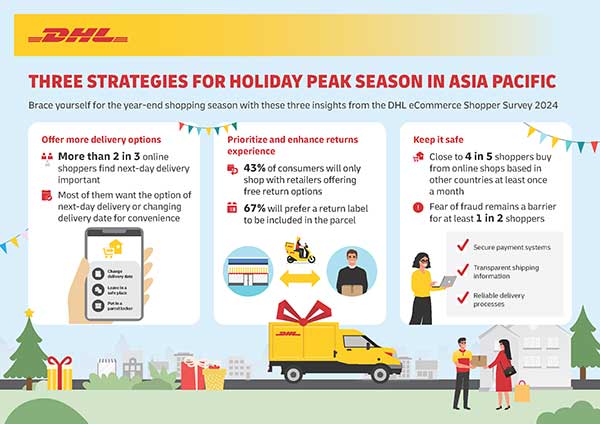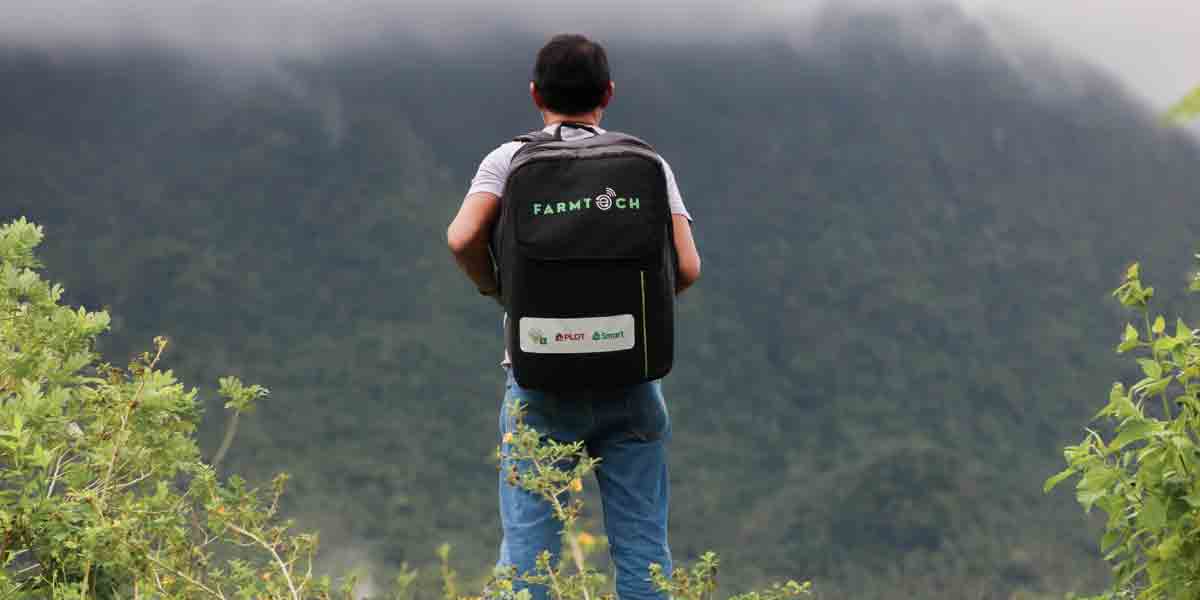
Asia Pacific online shoppers are prioritizing flexible delivery options and free returns when making cross-border purchases, according to key insights from the global DHL eCommerce 2024 Online Shopper Trends Report.
The two chapters – “Cross-border buying” and “Delivery and returns” – share that the region’s shoppers continue to buy online from overseas, and expect next-day delivery and the ability to track their parcels in real-time.
However, survey respondents also cite fear of online fraud despite the enthusiasm in cross-border e-commerce.
Pablo Ciano, CEO of DHL eCommerce said, “Asia Pacific consumers are driving demand for cross-border shopping like never before. This means that there is a tremendous opportunity for businesses to grow internationally if they sell and engage effectively. Specifically, with the rise of on-demand business models influencing today’s digital shoppers, ‘speed’ and ‘choice’ are everything. By addressing key consumer concerns such as transparent delivery times, flexible returns, and fear of fraud, retailers can capture the growing market.”
Growing expectations around delivery times and real-time tracking
As the online shopping landscape continues to evolve with the rise in social commerce, online consumers today do not lack options and seek more control over their purchases. They want to have multiple delivery options and the ability to track their parcels in real-time.
More than two in three online shoppers in Asia Pacific agree that next-day delivery is important to them, with 74% in Thailand and 72% in India saying so.
When it comes to delivery preferences, nine in 10 shoppers in India (89%), Malaysia (89%), and Thailand (94%) favor home delivery, reflecting a strong preference for convenience. However, the demand for alternative delivery options is also rising, especially when the item is already out for delivery.
Most online purchasers claim it is important to have the option of re-directing their parcel to a safe place, neighbor, parcel locker, pick-up point or changing the delivery day as it enhances flexibility and convenience.
Additionally, 86% of consumers in Asia Pacific expect end-to-end tracking on international orders, underscoring the need for real-time visibility and control in the delivery process. In fact, survey respondents from the region rate “quick delivery time” and “real-time tracking” as the top two factors key to improving their delivery experience.
Free returns to serve as a competitive edge
The Asia Pacific reverse logistics market size is predicted to be worth around USD 1,970 billion by 2033, at a CAGR of 13.3% from 2024 to 2033, indicating a need to equally prioritize and enhance the returns experience for customers.
The report notes that free returns are increasingly influencing Asia Pacific shoppers when deciding where to buy, as 43% of consumers in the region will only shop with retailers that offer free return options. India also tops the global chart for saying that free returns is the most important with 67% stating that they will only buy from online shops that provide free returns.
On top of that, 67% of Asia Pacific online shoppers prefer that a return label is included in their parcel if they need to return an item. Thai and Indian shoppers, in particular, have a high expectation of this as 71% and 70% of them claim so.
To stay ahead of the competition in a fast-changing cross-border e-commerce space, businesses must have flexible and cost-effective return policies if they want to build customer loyalty and encourage repeat purchases.
Opportunity and fear
Digital payments are enabling online consumers to enjoy more seamless cross-border shopping experience. For businesses in the region, this presents a clear opportunity to expand into global markets by offering the products and services that international consumers are actively seeking.
Across the Asia-Pacific region, close to four in five (76%) buy from online shops based in other countries at least once a month, and 30% do so at least once a week. India leads the world in cross-border purchases, with 38% of Indian shoppers making international purchases at least once a week. This trend is echoed across Malaysia (80%), Thailand (80%), China (75%), and Australia (75%), where a significant number of consumers also buy from overseas at least once a month. This frequency is expected to escalate with 37% of the respondents indicating that they will buy more online from non-local shops in the next 12 months.
However, the report findings also reveal that to capture this demand, businesses need to prioritize security, and transparency to reassure customers. Despite the enthusiasm for cross-border shopping, fear of fraud remains a barrier for at least one in two Asia Pacific shoppers. Malaysians are the most concerned about fraud risks, which includes worries around the authenticity of sellers and the security of transactions.
These deter consumers from making more international purchases. To overcome these obstacles, businesses must prioritize secure payment systems, transparent shipping information, and reliable delivery processes to build trust and encourage repeat purchases.
With an abundance of options online internationally, businesses and e-tailers must be able to recognize what online shoppers value most, as it can make or break a sale. As this region continues to lead global e-commerce growth, businesses will need to enhance their online presence, refine the delivery experience to expand their reach and build trust with customers both domestically and abroad.
The DHL eCommerce 2024 Online Shopper Trends Report aims to arm e-commerce businesses targeting the fast-growing Asia-Pacific market with insights on the region’s online shopping behavior and preferences. Survey respondents come from markets including Australia, China, India, Malaysia, and Thailand.


















